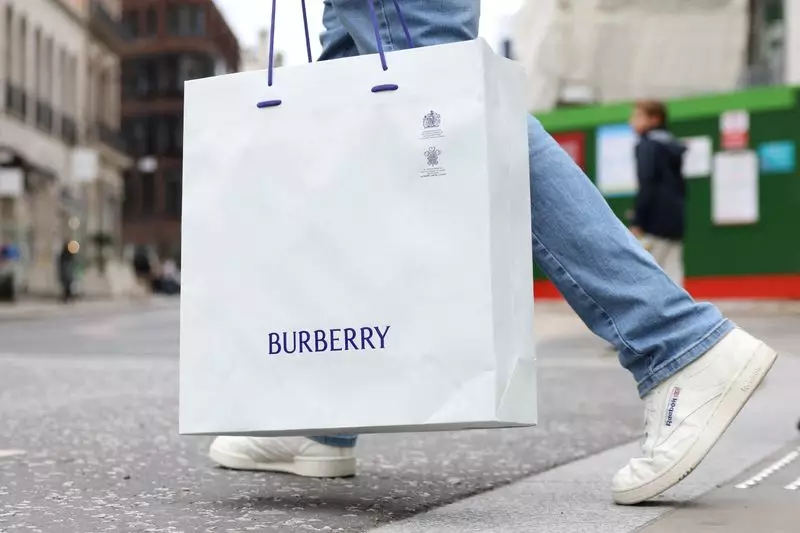Burberry, a renowned British luxury brand, recently released its quarterly sales figures reflecting a modest decline of 4% in comparable store sales. This result, though a setback, was better than the actions of analysts, who had anticipated a more severe 12% dip. The notable contribution to this performance stemmed from a robust holiday season in the United States, signaling perhaps a budding recovery in consumer confidence within the luxury market. Such developments have led to an impressive surge in Burberry’s stock price, soaring by 12%. Additionally, this bounce-back in demand has sparked a positive ripple effect throughout the luxury sector, with companies like Kering and LVMH witnessing rises in their share values.
The recent performance raises questions about the effectiveness of leadership and strategic direction at Burberry. Under the guidance of CEO Joshua Schulman, who assumed the role just six months ago, the company appears to be gravitating back to its foundational strengths. Schulman’s strategy of spotlighting iconic products like trench coats and cashmere scarves, rather than focusing on less recognizable items such as bags and shoes, seems to have resonated with consumers. This shift underscores a significant insight: in the world of luxury branding, familiarity often breeds desirability. Schulman’s remarks on the newfound growth of customers in December offer a promising glimpse into Burberry’s potential resurgence.
A crucial element supporting Burberry’s turnaround strategy has been its festive advertising campaigns. By accentuating products that customers easily recognize, the brand sought to rekindle its connection with a diverse consumer base. The effective use of marketing during critical festive periods likely played a pivotal role in influencing consumer behavior at retail stores. The company’s efforts to adjust price points for its high-end offerings also suggest an acute awareness of the evolving luxury market dynamics, where price elasticity could determine the brand’s economic health. The strategic pricing of cashmere scarves—ranging from approximately £420 to £990—reflects a calculated attempt to attract both existing and new customers.
Regional Performance Insights
A closer look at regional sales reveals a disconcerting yet slowly improving trend. North America emerged as a powerhouse for Burberry, with a notable 4% increase in sales attributed to the resurgence of a refurbished store in New York. This socio-economic backdrop indicates a stabilization in consumer enthusiasm and demand within the region. Conversely, while Asia faced a significant overlap in declines, particularly with a 9% drop after a dramatic earlier 28% fall, a show of resilience mustn’t be overlooked. The emergence of consumer confidence in China, bolstered by the opening of a new boutique in Beijing, hints at potential growth trajectories for the brand in critical markets.
Financial Outlook and Future Prospects
The financial ramifications of Burberry’s current trajectory reveal substantive expectations. According to Chief Financial Officer Kate Ferry, there are indications that the brand may pivot towards profitability by the end of the financial year, thus offsetting previous losses incurred in the first half. Such optimism can be attributed to improved full-price sales alongside markdowns that have helped clear lingering inventory. Historically, the luxury sector thrives on an aura of exclusivity, and Burberry’s ability to maintain that balance while addressing consumer needs can be instrumental in shaping its future.
As Burberry braces for its Autumn/Winter 2025 collection presentation at London Fashion Week, it stands at a crossroads. The recent quarterly performance, while not wholly satisfactory, showcases signs of recovery that may influence industry sentiment. Investors and consumers alike are attuned to the luxury sector’s ebb and flow and how Burberry navigates its current challenges will undoubtedly shape its trajectory in the years to come. The journey ahead, filled with both potential pitfalls and opportunities, will be pivotal in defining the enduring legacy of this iconic brand in the luxury fashion landscape.

